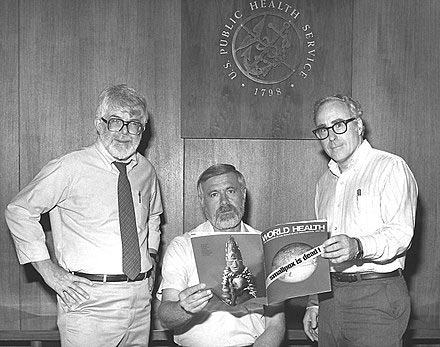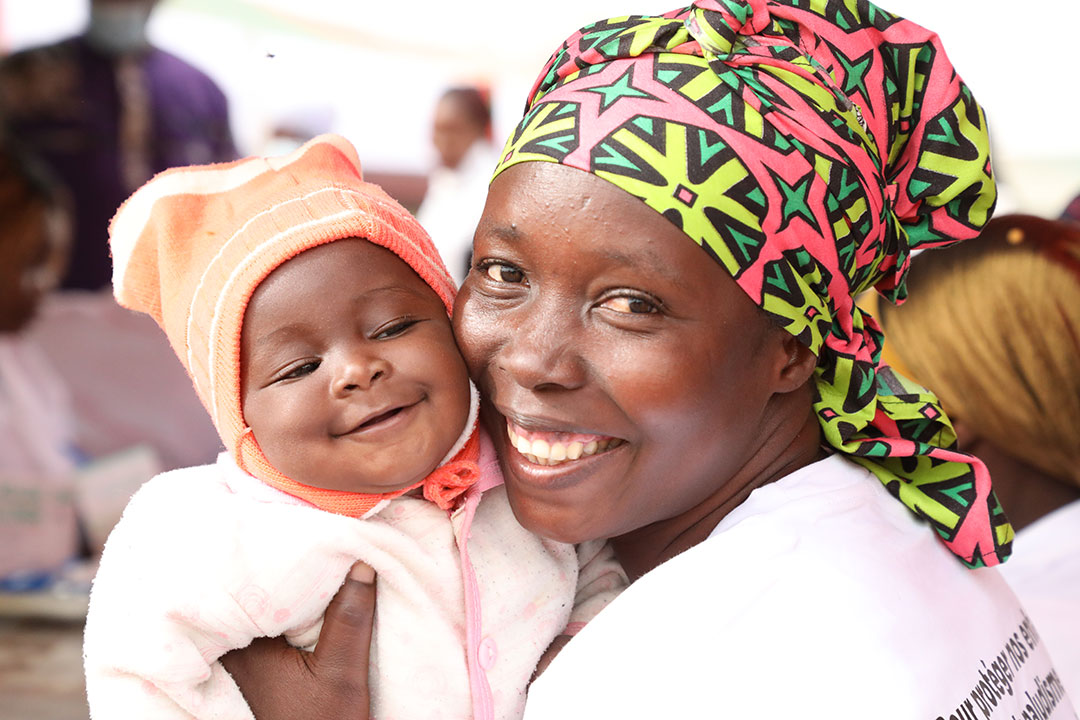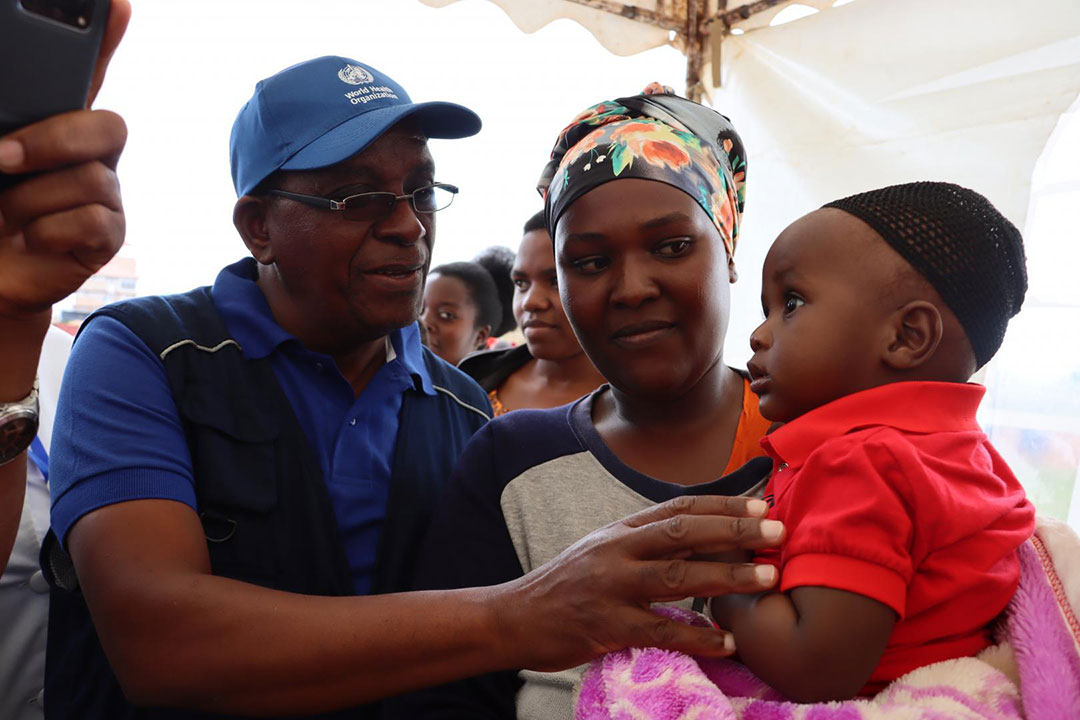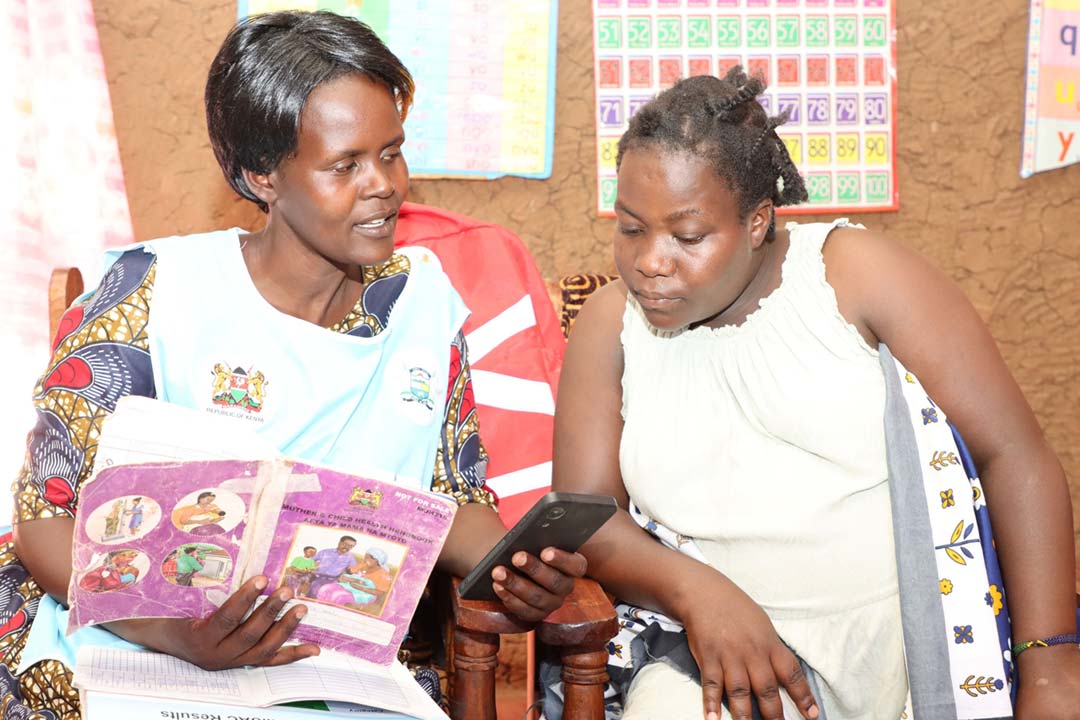75 years later: the birth of the World Health Organization
As the WHO reaches its 75th birthday, VaccinesWork looks at how the organisation came to be.
- 6 April 2023
- 7 min read
- by Gavi Staff

Cholera arrived in the West and forced a reckoning.
Europe thought of 'Asiatic cholera' as a constitutionally 'Oriental' problem. But a growing ocean-going trade network ferried the fast-moving pathogen to London, where it killed 5,275 people in 1831 and 1832. Within the next year, it killed hundreds of thousands across Europe and the Americas.
The reckoning was with a fact that would in years to come begin to resonate as a catchphrase of international health diplomacy: epidemic disease respects no borders.
Before 'health for all'
But in its 19th century articulation, the warning was restricted in its embrace – expressive of regional health protectionism, rather than global health equity. To address it, a series of International Sanitary Conferences were convened in Europe beginning in 1851. This was the imperilled West seeking to limit an "Eastern" threat, while protecting its trading profits and imperial holdings.
It was also a beginning, setting a precedent for efforts at international cooperation to control such diseases as cholera, plague, smallpox and typhus. According to a 1975 book published by WHO, "the long series of International Sanitary Conferences … were ultimately to lead, almost a century later, to the founding of WHO."
Before WHO, though, there were other, mostly shorter-lived international health organisations. The International Sanitary Bureau – now called PAHO – was established in the Americas in 1902. For Europe, L'Office International d'Hygiene Publique (OIHP) was founded in 1907. The Health Organisation of the League of Nations set up its headquarters in Geneva in 1919, as the so called 'Spanish Flu' raged, fuelled by World War I troop movements, ultimately killing more people worldwide than the conflict had.
War and the new 'United Nations'
World War II remade public health. So many people in so many places were dead, injured, displaced, hungry; so many health systems had been shattered. At the same time, paradigm-shifting technological possibilities had emerged. "The wartime discovery of the insecticide DDT and a range of pharmaceutical technologies made effective, cheap disease control more feasible than it had been previously," writes historian Sunil S Amrith in his book Decolonizing International Health. "Public health was mobilized and motorized to an unprecedented extent."
By 1943, a massive Allied-led, and dominantly US-funded organisation called the United Nations Relief and Rehabilitation Administration (UNRRA) had been established to coordinate relief to more than 30 countries in Europe, north Africa and Asia that had fallen under Axis attack.
Its emergence in that moment was important. The League of Nations Health Organization had suffered a "slump into oblivious suspension" at war's outbreak, according to Ludwik Rajchman, its director. OIHP, meantime, had been tarnished by accusations of collaboration with the Nazis.
UNRRA's health division, then, stepped into multiple voids, rehabilitating hospitals, clinics and labs, preventing outbreaks of diseases like typhus by distributing drugs and DDT, and even directly replacing the wrecked health system in many places. But leading American voices in UNRRA "understood that reconstruction would be a heavy burden and set as their highest priority the creation of a new multilateral agency"1.
That new agency was called for formally in a declaration submitted by the delegations of Brazil and China at the landmark United Nations Conference on International Organization that was convened in San Francisco in 1945. "International health security, now more than ever, is becoming a matter of immediate urgent concern," it asserted1.
By the end of that meeting, a UN constitution – one that provided for the organisation of a specialised health agency – had been approved.
Proto-WHO
So it existed notionally, if still anonymously. A technical preparatory committee (TPC) for the new health organisation, comprising 16 medical leaders, eight from Europe, five from the Americas and three from Asia, was assembled in February 1946.
By mid-year, the World Health Organization had a constitution – heavily modelled on the US Public Health Service – and a name, and had been endowed with the former functions of the OIHP, LNHO, and many of UNRRA's.
The famous preamble of WHO's constitution signalled a shift towards universalism and inclusivity. WHO's values, like those of the rest of the emergent UN's, were being shaped by the political vocabulary emerging from ongoing anti-fascist and anti-colonial struggles2.
"Health is a state of complete, physical, mental and social well-being and not merely the absence of disease and infirmity," the document reads. "The enjoyment of the highest attainable standard of health is one of the fundamental rights of every human being without distinction of race, religion, political belief, economic or social condition."
Cholera shapes health history again
An Interim Commission (IC) would take charge of health work until the first World Health Assembly – a great democratic experiment in itself, at which each nation would wield a single, equal vote – could establish the organisation proper.
But the first major epidemic challenge didn't wait. In September 1947, cholera struck in Egypt, in a village of 15,000 called El Korein. It took just days to get to Cairo. In late October, it was killing 500 people each day.
Ripples of panic chased each other through the rest of the world. Greece grounded all flights to Cairo and nonsensically spritzed its cities from the air with DDT. Italy quarantined passengers arriving from Egypt, and many countries halted the importation of cotton.
Have you read?
An Egyptian doctor and bacteriologist called Aly Tewfik Shousha emerged as a cogent and convincing voice on the epidemic. The IC threw its weight behind him, supporting the measures he drew up, especially by "coordinating and becoming the clearing-house for the supply of tons of vaccine and medical equipment from all over the world."1 By November, there was enough vaccine in the country to inoculate half its population; the IC sent vials to Syria and Saudi Arabia too.
Though that vaccine would later be retired, the evidence suggested that the campaign, along with improved sanitation and awareness raising, helped bring the outbreak to a close in just six weeks. At 50%, the epidemic's case fatality rate was devastating, but significantly lower than previous cholera outbreaks.
"Postwar circumstances were such that when the IC responded it in effect became, at least in part, a field agency and not merely an information management agency, and those events accelerated and shaped the institution-building process of the WHO," observe Cueto and his co-authors in The World Health Organization: A History.
WHO?
On April 7, 1948 the WHO's constitution entered into force.
But the diplomatic midwifery of the organisation's establishment was not yet over with. The first WHA took place in the middle months of that year at Geneva's Palais de Nations, and hit a roadblock when the US demanded to be allowed to withdraw from the UN within a year of giving notice. The Soviet Union balked; Cold War tensions were rising. A Croatian physician and elder statesman of health diplomacy called Andrija Štampar – credited with the Constitution's indispensable preamble – smoothed things over backstage.
By summer's end, the organisation had 55 member states and a permanent home in Geneva. Canandian psychiatrist Brock Chisholm, executive secretary of the IC, became its first director-general. Soon it had a staff – one which numbered, by the following year, 254 people, and a modest budget.
What direction would the new WHO take? Cueto and colleagues1 see in this period the inception of a tussle of approaches that would shape the WHO for decades to come. On the one hand were proponents of what they call the "socio-medical perspective" which would lead to such achievements as the revolutionary identification of Primary Health Care (PHC) as a keystone global health concept.

On the other, there were advocates of the "technocratic, biomedical perspective". Tech-driven, vertical eradication programmes were particularly boosted by the Cold War-era US, which imagined the elimination of major threats as a kind of inoculation against poverty, and thus, against the temptations of communism. The WHO's single most celebrated achievement to date – the eradication of smallpox, which "relied substantially on leaders and volunteers in local communities" – took from both.
The smallpox campaign's direct successor, the Expanded Programme on Immunization (EPI), is arguably more trudging, more routine, than the decade-long vaccination sprint that wiped out one of the world's deadliest viral diseases. But its impact has been almost unutterably profound.
1. This article is heavily indebted to The World Health Organization: A History by Cueto, M., Brown, T., & Fee, E. (2019) Cambridge: Cambridge University Press. doi:10.1017/9781108692878
2. Sunil S. Amrith, Internationalising Health in the 20th century in Internationalisms: A Twentieth-Century History ed. Glenda Sluga and Patricia Clavin
More from Gavi Staff
Recommended for you









